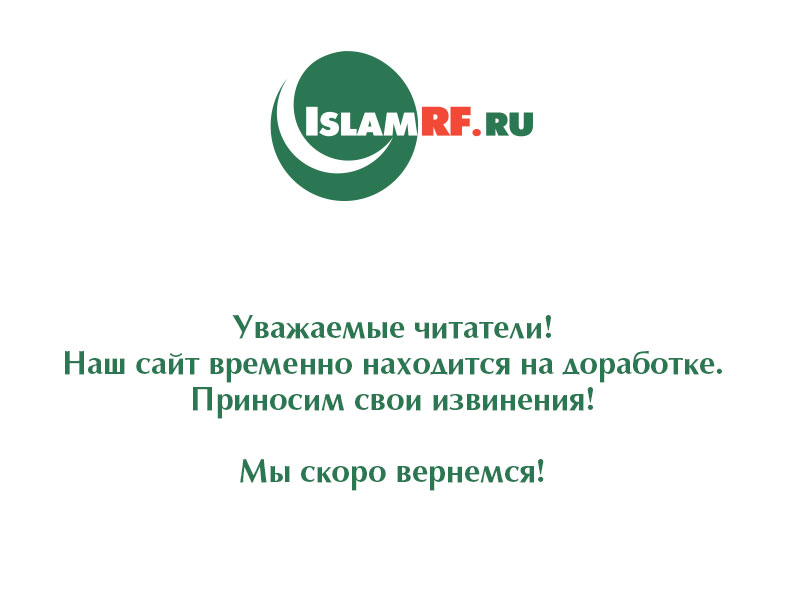Russian Waqf: Traditions and Perspectives
15.01.2009 13:47
The issue of waqfs has become of rising importance lately. It may be explained by the rising need of Muslim ummah for permanent sources of financing for Muslim infrastructure, first of all to support professional educational institutions. New standards for technical equipment and level of teaching set requirements contemporary Islamic institutions simply are not able to meet. While secular higher education is becoming a commercial activity Muslim professional education remains free. Furthermore students are provided with board and lodging. Several new mosques have been built in the past 20 years but their maintaining is pretty spendy and many of them can hardly make the ends meet. Religious Boards of Muslims and separate mosques organize summer camps and various clubs and study groups for children and youth to compensate the lack of fee-free leisure time activities. They also render financial help to those in need. Finally they need money to issue books, periodicals and running websites to oppose radical propaganda of terrorist advocates along with attempts to establish parallel authorities. All of the activities listed require permanent financing not provided neither in state nor in local budgets.
During the centuries of its existence Muslim ummah has developed a system of self-sufficiency through a waqf — an institution that regulates religious activity. Russian Muslims now know much about waqfs in Muslim countries (especially in Kuwait and in Turkey) and about the institution of Russian waqf in pre-Soviet Russia. During the years of Soviet power this issue was totally neglected since there was no practical need. However nowadays with the rising need in waqfs the problem of their status in contemporary circumstances became topical again.
Waqf in the Arabic language means “hold”, “confinement”. The word waqf is used in Islam in the meaning of holding certain property and preserving it for the confined benefit of certain philanthropy and prohibiting any use or disposition of it outside that specific objective. This definition accords perpetuity to waqf, i.e., it applies to non-perishable property whose benefit can be extracted without consuming the property itself. Therefore waqf widely relates to land and buildings. From the legal point of view the ownership of waqf property lies outside the person who created the waqf. The Right of ownership of waqf belongs to beneficiaries although their ownership is not complete in the sense that they are not permitted to dispose of the property or use it in a way different from what was decreed by the founder of waqf. In this regards waqf differs from a foundation since the management of a foundations is usually able to sell its property. This implies that perpetuity is stronger in waqf than in foundations. In principle, the waqf founder determines the type of management of his/her waqf. The waqf manager is usually called mutawalli and his/her responsibility is to administer the waqf property to the best interest of the beneficiaries. The first duty of mutawalli is to preserve the property then to maximize the beneficiaries’ income. The waqf document usually mentions how the mutawalli is compensated for this effort and if the document does not stipulate a compensation for the mutawalli, he/she either volunteers the work or seeks compensation through the court.
Millets (religious communities) in Muslim states owned real estate including buildings for performing religious devotions and for educational and charity purposes. These buildings confined for providing revenues to spend on mosques’ upkeep and running expenses are in the category of religious waqf. The land in towns of the Ottoman Empire predominantly belonged to different waqfs. Such institutions as madrasahs, public baths, caravan-sarays, hospitals, mental hospitals and other institutions maintaining city facilities were financed by religious institutions.
As for the Russian experience, in the middle of the 19th century in Crimea and in Turkestan waqfs were acknowledged by the state government as non-taxable and non-governmental with income assigned for the needs of maintaining mosques and educational institutions and controlled by the Religious Board. However we would find quite a different situation in the central part of Russia and in Siberia. Most part of waqfs in the Volga region were abolished soon after the Kazan Khanate was liquidated in 1552 to be fully abolished in 1730’s during the reign of Empress Anna Ioanovna. In the Ural region waqfs have never been numerous.
There was a rising number of waqfs in the 19th century however even then the income of Russian waqfs was far from the level of that in Muslim states. Besides they were not acknowledged by the government somehow and thus operated without any control on the part of mutawallis. As a result religious leaders and teachers were deprived of this independent source of financing unlike Russian Orthodox clergy and Muslim clergy in Islamic countries.
Before the October revolution of 1917 almost all of the 17 Kazan mosques had waqf real estate including houses, groceries, shops and plots of land and some funds invested in several banks at interest to upkeep the infrastructure. The largest waqfs belonged to Muslim communities in Orenburg, Moscow and Troitsk.
Since the middle of the 19th century rich men and their descendants declared the waqfs’ trustees have been loosing their privilege in the favour of collective trust of the community. This process was first initiated by imam-khatyb of the First Cathedral mosque in Kazan Shihabutdin Mardjani who in 1870 established a collective trusteeship — mutawalli. This first mutawalli represented an educational model of the mutawalli since it was founded on the basis of a madrasah and educational needs were the largest users of waqf income.
In tsarist Russia waqfs were the source of income to finance religious, educational, social and cultural needs. Waqf financing of education usually covered libraries, books, salaries of teachers and other staff and scholarships of students making it independent of governmental and foreign aid. Before the Revolution of 1917 waqfs belonged to certain communities or madrasahs or maktabs and were supervised by mutawallis consisting of the most respected community members. The mutawallis technically served as an office to record and supervise waqf in every particular area. At the very same time the Muslim Religious Assembly in Orenburg was the authority of legal reference with regard to all matters and disputes related to waqf with the right to register new waqfs for absolutely no fee. The Third All-Russian Muslim Congress held in 1906 in Nizhny Novgorod resolved to authorize Religious Assemblies to be in charge of all the religious affairs of Muslims in the country including control over waqfs.
A new attempt to finance religious needs at the national level was undertaken in July 1917 after National and Cultural Autonomy government — Milli Idare — was formed. The government included 3 ministries (Nazarats): Diniya (Ministry of religious affairs headed by mufti Galimdjan Barudi), Maliya (Ministry of Finance) and Magarif (Ministry of Education). On October 10–13, 1917 a Maliya Nazarat meeting was held in Ufa to found a “national treasury of Turks and Tatars of Interior Russia and Siberia” — the so-called Milli Khazineh (National Treasury). It was to provide financing for religious, educational, and other needs of the Autonomy including maintenance of educational institutions, hospitals, orphan’s homes and vocational schools. It was resolved to assign at least 1% of the funds to national needs provided that the funds were raised through taxing and voluntary contributions. Milli Khazineh has developed to become a well-off institution with the asset of over 1 million roubles and was naturally seized by the Soviet authorities. The waqfs were finally eliminated in 1929.
The revival of waqfs in Russia didn’t start until 8 years ago when in 1998 the United Congress of Muslims of the Republic of Tatarstan established positions of the chairman of waqfs and a department of waqfs at Religious Board of Muslims of the Republic of Tatarstan. Nowadays waqfs already exist de facto. For example, in Kazan several buildings for religious and educational needs were declared as waqfs. Moscow expert on Islam V. Bobrovnikov claims that in Dagestan several collective farms have returned to the disposal of local mosques the most part of former waqf fields and gardens this providing waqfs with legal effect in spite of the existing legislature of the Russian Federation and of the Republic of Daghestan. This means that there is an objective necessity to amend the legislature in accordance with reality.
Neither waqf nor waqf property are subject to legislative definition nowadays unlike chapter-lands and chapter-property. Reviving properties of waqf in contemporary conditions would mean in the first place returning those waqfs that were previously added to public properties of the government — not only real estate in the cities, which is the most favourable of course, but also funds and plots of land. The main trustee here should become professional educational institutions. Waqfs should acquire rights of a legal entity with a supervising body of mutawallis maintaining their incomes and expenses. They are to keep this information public so that to let people keep track of their donations. The waqf should have a status of a religious organization similar to that of a cloister and enjoy proper rights and privileges.
According to Article 4 of the Federal law of Freedom of Conscience and Religious Associations the state regulates granting of tax and other privileges to religious organizations, and grants financial, material, and other support to religious organizations for restoration, maintenance, and preservation of buildings and objects that are monuments of history and culture. Paragraph 1 of Article 21 of the law (The right of ownership of religious organizations) states that “Religious organizations may own buildings, land parcles, items intended for manufacturing, social, charitable, cultural-educational and other purposes, objects for religious purposes, financial means and other property required for securing their activity, including such as pertains to monuments of history and cultures”. Paragraph 2 grants waqfs with “the right of ownership of property, acquired or created by them at the expense of their own resources, donated by citizens and organizations or whose ownership is transferred to the religious organizations by the state or acquired by other means that do not violate the legislation of the Russian Federation”. According to Paragraph 3 of the law “the transfer of ownership to religious organizations, for use in achieving their purposes, of cult buildings and premises, with the land portions attached to them, and of other property having religious signification, which is owned by state and municipal agencies, is accomplished free of charge”.
Thus the logic of development of Russian home policy requires bringing of the system of Muslim property into accordance with Russian legislature and the system of Orthodox property.
Summing up, since Religious Boards of Muslims in Russia are split and foreign organizations are constantly trying to put pressure upon Russian Muslims it is reasonable for every organization to have separate waqfs. The mechanisms of waqfs revival along with the principles of their maintaining should be supported by the legislature. Waqfs should primarily cover religious education and also may participatein issuing new books and building new educational campuses and religious centres. Demographic crisis and an ever-growing number of new migrants would make waqfs a perfect solution for adaptation of the newcomers. Other category of the waqf income users might include the poor, orphans, needy, young families. Given that Russia has become an observer state of the OIC it makes it easier to enact new laws which would help in recovering, preserving and developing the property of waqf and encouraging people to create new waqfs in Russia. It would only demonstrate Russia’s striving to revive the best traditions of its Muslim ummah.
Aydar Khabutdinov






 RSS
RSS



